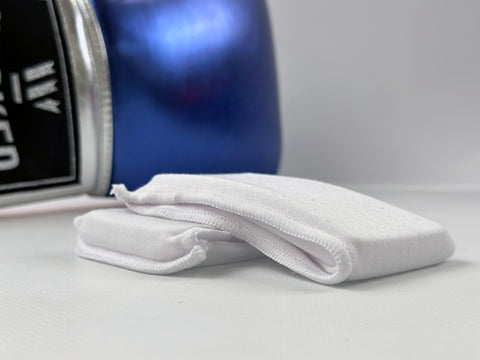Boxing, known as the "sweet science," is a sport that demands strength, skill, and strategy. Throughout its long and storied history, the sport has witnessed the continuous evolution of equipment designed to protect and enhance the fighters' abilities. One such crucial piece of equipment is the knuckle guard. In this blog post, we will delve into the captivating history of knuckle guards in boxing, exploring their origins, evolution, and significance in shaping the sport we know today.
Origins: Bare-Knuckle Boxing: The roots of boxing trace back to ancient civilizations, where the sport was initially practiced without any protective gear. Ancient Greeks and Romans engaged in a form of boxing known as "pugilism," wherein fighters used their bare hands to strike opponents. This primitive form of boxing highlighted the raw brutality and toughness of the early combatants.
The Introduction of Handwraps: As the sport progressed, fighters recognized the need for some level of hand protection. In the late 17th century, handwraps made from strips of cloth or leather were introduced. These wraps were mainly used to provide additional support to the fighters' wrists and hands, minimizing the risk of fractures and sprains. However, these early handwraps offered limited protection to the knuckles themselves.
The Birth of the Knuckle Guard: During the late 19th century, boxing underwent a significant transformation with the introduction of padded gloves. The padded gloves, often referred to as "mufflers" or "pillows," aimed to decrease the severity of injuries caused by bare-knuckle boxing. However, these early gloves offered little protection to the fragile knuckles, leading to numerous fractures and cuts.
James J. Corbett and the Development of the "Muffler": In the late 1800s, James J. Corbett, an influential figure in boxing history, recognized the need for enhanced knuckle protection. Corbett experimented with various materials, including horsehair and cotton padding, to create a more effective glove design. His efforts led to the development of the "muffler," which incorporated additional padding over the knuckles, reducing the risk of injury and making boxing a safer sport.
The Evolution of Knuckle Guards: Throughout the 20th century, advancements in technology and materials revolutionized the design of knuckle guards. The introduction of foam and synthetic materials allowed for improved shock absorption, providing enhanced protection to the hands and knuckles of the fighters. As boxing evolved into a regulated sport, standardized rules and guidelines for the construction and use of gloves and knuckle guards were established.
Modern-Day Knuckle Guards: In contemporary boxing, knuckle guards have become an integral part of a boxer's equipment. Modern designs focus on maximizing protection while maintaining comfort and flexibility. High-quality materials, such as gel padding, multi-layer foam, and synthetic fabrics, offer superior shock absorption and durability. Furthermore, innovations like moisture-wicking technology and ventilation systems enhance breathability and prevent excessive sweating during intense bouts.
The history of knuckle guards in boxing reflects the sport's evolution from its raw and brutal beginnings to the regulated and safety-conscious environment of the modern era. From the ancient Greeks to the introduction of handwraps and the development of padded gloves, the need for knuckle protection has always been a priority for boxers. Today, state-of-the-art knuckle guards are meticulously designed to provide optimal hand and knuckle protection while allowing fighters to perform at their best. As boxing continues to evolve, we can expect further advancements in knuckle guard technology, ensuring the safety and longevity of this beloved sport.




